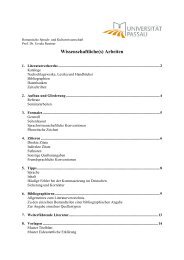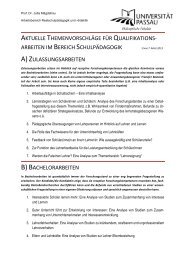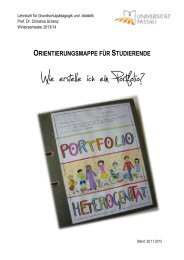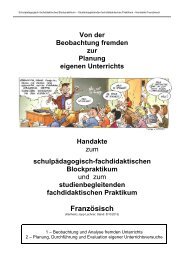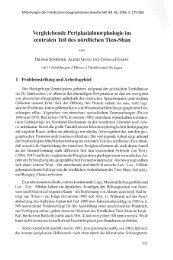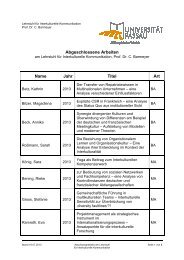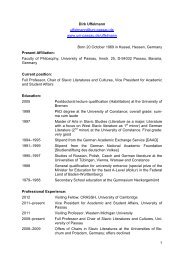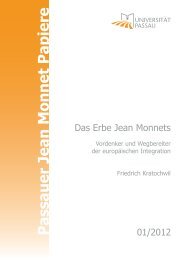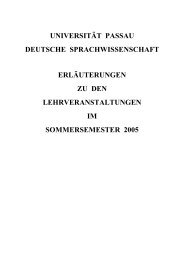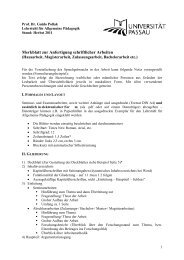The attempt to adopt a mixed-member proportional election system ...
The attempt to adopt a mixed-member proportional election system ...
The attempt to adopt a mixed-member proportional election system ...
You also want an ePaper? Increase the reach of your titles
YUMPU automatically turns print PDFs into web optimized ePapers that Google loves.
11<br />
At this point, therefore, the number of models for the design of Thailand’s future elec<strong>to</strong>ral<br />
<strong>system</strong> had increased <strong>to</strong> three. In the same meeting, Pisit Leeahtam 18 summarized<br />
this situation by pointing out that, at the beginning, the krop (second subcommittee)<br />
had wanted only 400 MPs, without party lists. He pointed out that there<br />
had been little discussion in the sub-committee, simply because the decision <strong>to</strong> drop<br />
the party list had been made at the very beginning of the proceedings already. However,<br />
in their six-day retreat in a Cha-am hotel, about ten CDC <strong>member</strong>s had insisted on<br />
keeping the party list MPs, which had led <strong>to</strong> the drafting of article 90/1 (an alternative<br />
version of the original article that excluded party-list MPs, presumably comprising<br />
400 constituency MPs and 80 regional party list MPs). Finally, Krirkkiat had proposed<br />
a <strong>proportional</strong> <strong>system</strong> modeled after that of Germany (CDC 20:75).<br />
Creating confusion about “<strong>proportional</strong>ity” at the retreat in Bang Saen<br />
<strong>The</strong> next step in this struggle about Thailand’s next elec<strong>to</strong>ral <strong>system</strong> came in a series<br />
of six meetings (nos. 22 <strong>to</strong> 27) held between April 6 and 11, 2007, at a hotel in the<br />
seaside resort <strong>to</strong>wn of Bang Saen, Chonburi province, in order finally <strong>to</strong> decide on the<br />
content of the hearing-version of the constitution. <strong>The</strong> decisive 26th meeting on April<br />
10 started with Krirkkiat right away again describing the <strong>proportional</strong> <strong>system</strong>. Others,<br />
like Jaran, Vicha Mahakhun, 19 Chuchai Suphawong, 20 and Komsan Pokhong 21 also<br />
spoke in favor of this approach, though they differed in some detail. On the other<br />
hand, Nakharin Mektrairat, 22 Phairote Phromsan, 23 and Woothisarn Tanjai 24 were critical<br />
of this proposed new <strong>system</strong>. All of these CDC <strong>member</strong>s could be categorized as<br />
belonging <strong>to</strong> the administrative and academic stratum of the aphichon. However, this<br />
did not mean that they always shared the same opinion. Thus, in the context of debating<br />
the <strong>election</strong> <strong>system</strong>, one could distinguish between “reformers” and “conservatives”<br />
within the same socio-political stratum. 25 <strong>The</strong>ir relationship was not always<br />
without tension. <strong>The</strong> “reformers” insinuated that the “conservatives,” in rejecting the<br />
<strong>adopt</strong>ion of a <strong>mixed</strong>-<strong>member</strong> <strong>proportional</strong> <strong>system</strong>, somehow ignored the best interests<br />
of the country. <strong>The</strong> “conservatives,” on the other hand, accused the “reformers” that<br />
they did not properly understand Thai political culture and structures, and had therefore<br />
proposed an <strong>election</strong> <strong>system</strong> that was “inappropriate” for the country. In a later<br />
meeting (No. 35 of June 1, 2007), Pisit Leeahtam apparently felt the need <strong>to</strong> take up<br />
this issue saying that he had detected a problem of fairness regarding the criticism




